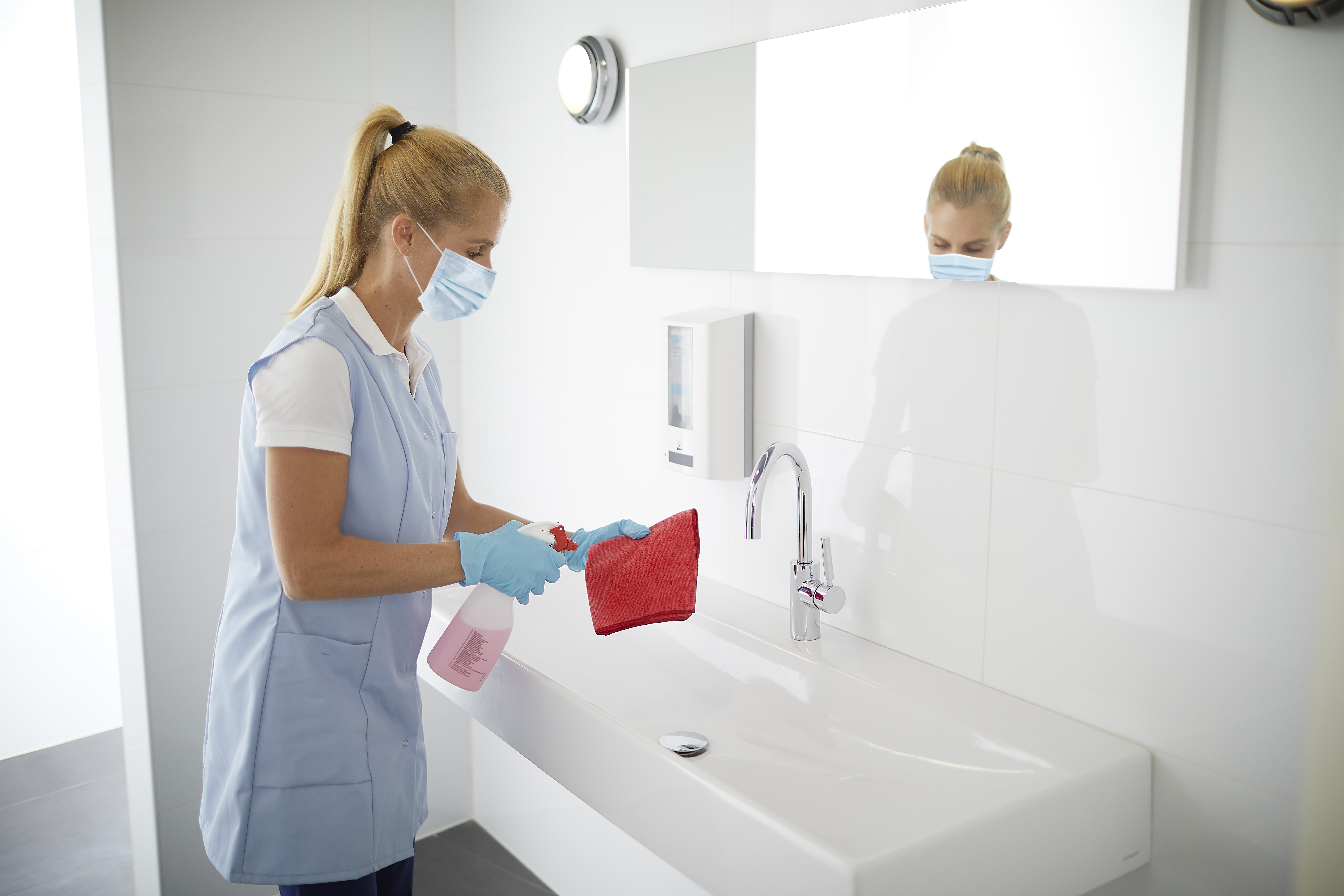Surface disinfection is - with good hand hygiene - one of the cornerstones of infection prevention. Keeping a surface clean and free from pathogens helps to break the chain of infection. But as with any cleaning process, it is important to plan and have all of the necessary tools, equipment, and chemicals required before starting.
Here are 6 specific recommendations for use of disinfectants.
Each country will have a strict process to test, approve and register disinfectants. Using a disinfectant approved by the Government or its appointed agency will ensure the product meets specific criteria for effective performance in its designated settings and applications. For example, disinfectants that meet the requirements of the European EN 14476 standard (either fully virucidal or limited virucidal or effective against Vaccinia virus) are effective against enveloped viruses like SARS-CoV-2, the virus that causes COVID-19.
With traditional two-step disinfection, staff must always clean the surface before they can use a disinfectant. Modern formulations now allow surfaces with light-to-moderate soiling to be cleaned and disinfected in a single pass. These combined cleaner disinfectants are known as one-step products. They are tested in the presence of organic soil to ensure that they will perform as expected. However, surfaces with heavy soiling must still be pre-cleaned before using any disinfectant.
All disinfectants must be used in line with the manufacturer's guidelines and the directions on their labeling. These directions include approved application methods, the correct contact time, and correct dilution of concentrated products. Failing to follow these instructions is against the law in many countries.
The product label on a dilutable product will specify how much water must be added to achieve the correct dilution for effective disinfection. Using the wrong dilution can make the disinfectant ineffective and increase health and safety risks associated with using it.

The product label will specify how long the product must remain wet on the surface (known as the contact time) to ensure that disinfection is effective. If the surface dries sooner than the contact time there is no guarantee that the product has killed the pathogens claimed on the label.
The product label and SDS (safety data sheet) always include relevant health and safety information on how to use the disinfectant. Staff should always read the label and the SDS before using the product and follow all of the instructions. If any PPE is required, this will be explained on the SDS and possibly the product label. When PPE is required staff must use the appropriate items to comply with regulations and avoid the risk of personal injury.
Market research has shown that the COVID-19 pandemic has created an exponential demand for disinfectant sprays and ready-to-use disinfection wipes. Learn more and improve your preventive measures with Diversey Infection Prevention Technical Experts.
Use biocides/disinfectants safely. Always read the label and product information before use. Contents in this article apply to Europe. Please liaise with your local Diversey representative for further information about the solutions available in your country.